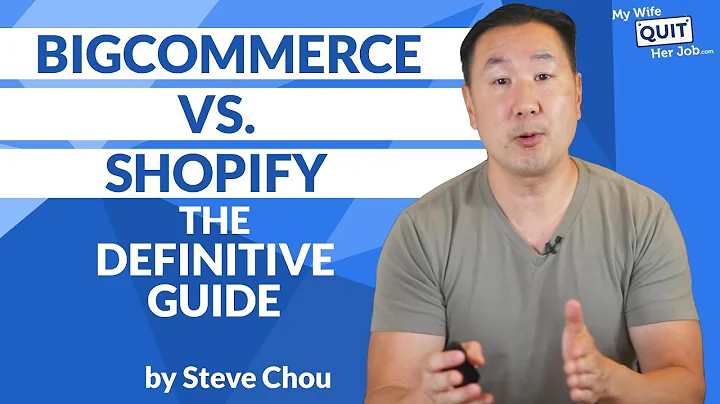Unlock SEO Potential: Repurposing Webinars and Podcasts for Success
Table of Contents
- Introduction
- The Challenges of Repurposing Webinars and Podcasts for SEO
- Creating an Effective Page Template
- Deciding Whether to Include Transcripts
- Keyword Research and Mapping
- Building an Outline and Writing the Article
- Embedding Video and Audio Assets
- Optimizing the Article for SEO
- Internal Linking and Call to Action
- Distribution of Podcasts and Webinars
- Summary
🎯 Introduction
In today's digital landscape, webinars and podcasts have become popular tools for businesses looking to engage with their audience and showcase their expertise. However, when it comes to SEO, webinars and podcasts present unique challenges. These forms of content are often time-bound, lack keyword optimization, and can cover a wide range of topics within a single episode. This makes it difficult for search engines to understand the content and for businesses to leverage their webinars and podcasts for SEO purposes.
In this article, we will explore strategies to overcome these challenges and repurpose webinars and podcasts for SEO. We will discuss the importance of creating an effective page template, the decision to include transcripts, keyword research and mapping, writing and optimizing the article, embedding video and audio assets, internal linking, distribution of podcasts and webinars, and more. By following these steps, you can maximize the SEO potential of your webinars and podcasts, increase organic traffic, and attract a wider audience.
The Challenges of Repurposing Webinars and Podcasts for SEO
Webinars and podcasts, while valuable for engaging with audiences and generating leads, do not inherently make great SEO content. They often lack keyword optimization and their structure can be time-bound and unfocused. This poses challenges when it comes to ranking them on search engine result pages (SERPs) and driving organic traffic to your website. However, with the right strategies and optimizations, you can make your webinars and podcasts rankable and leverage them for SEO.
Creating an Effective Page Template
To ensure consistency and efficiency in repurposing webinars and podcasts for SEO, it is advisable to create a page template that can be applied to each episode. This template should include essential elements such as a catchy headline, an embed of the webinar or podcast, a short description, timestamps, guest information, and links to relevant resources. By establishing a clear website structure and process for creating and updating these pages, you can streamline the repurposing process and improve SEO effectiveness.
Deciding Whether to Include Transcripts
One common question that arises when repurposing webinars and podcasts is whether to include transcripts on the page. Transcripts can provide various benefits, such as improving accessibility, enhancing user experience, and potentially aiding in search engine understanding of the content. However, not all episodes warrant transcripts, especially if they cover a wide range of topics or lack a clear focus. It is essential to assess the content and decide on a case-by-case basis whether a transcript is necessary or if other repurposing strategies would be more effective.
Keyword Research and Mapping
To optimize your webinars and podcasts for SEO, it is crucial to identify the keywords that align with the content. This can be achieved by brainstorming keyword ideas based on the webinar or podcast description and title. These keywords should reflect the main topics discussed and have the potential to rank well in search engine results. Once you have identified the keywords, you can use SEO tools like Ahrefs or SEMrush to assess their search traffic and difficulty. This will help you determine which keywords are most promising and relevant to your business.
Building an Outline and Writing the Article
When repurposing webinars and podcasts, you have the option to create a new long-form guide based on the content. This guide should be focused on a specific keyword and aim to provide valuable and comprehensive information to the audience. By building an outline and structuring the article around the main keyword and supporting keywords, you can ensure that the content is targeted and optimized for search engines. Additionally, embedding the video and audio assets within the article can enhance user experience and engagement.
Embedding Video and Audio Assets
Closely tied to the process of repurposing webinars and podcasts is the decision of where and how to embed the video and audio assets. These assets can be embedded within the article itself, providing readers with the option to watch or listen to the content without leaving the page. Alternatively, you can link to the webinar or podcast page where visitors can access the replay or subscribe to the series. By strategically incorporating these assets, you can drive traffic to the video or audio content and encourage engagement.
Optimizing the Article for SEO
To maximize the SEO potential of the repurposed article, several optimization techniques should be implemented. These include incorporating the main keyword in the URL, page title, meta description, and heading tags. The content should be well-structured with subheadings and supporting keywords, ensuring relevance and clarity for search engines. Additionally, including a clear call to action and utilizing internal linking can improve user experience and guide visitors to related content.
Internal Linking and Call to Action
When repurposing webinars and podcasts, it is essential to consider internal linking strategies. Internal linking can help strengthen the SEO performance of the content and guide readers to relevant resources within your website. This can be done by linking from the repurposed article to other related articles, webinar or podcast episodes, or relevant blog posts. Additionally, including a clear call to action within the article, such as subscribing to the podcast or signing up for future webinars, can further engage the audience and drive conversions.
Distribution of Podcasts and Webinars
To ensure maximum reach and visibility for your podcasts and webinars, it is important to select appropriate platforms for distribution. Popular platforms include Apple Podcasts, Spotify, Google Podcasts, and YouTube. By selecting the right platforms and optimizing your content for each platform, you can increase the discoverability of your podcasts and webinars and attract a larger audience. Moreover, actively encouraging guests to share the content on their own platforms can expand your reach and build backlinks to your website.
Summary
Repurposing webinars and podcasts for SEO requires careful planning, keyword research, and optimization techniques. By creating a solid page template, deciding whether to include transcripts, conducting keyword research, and building an article around the targeted keywords, you can maximize the SEO potential of your content. Embedding video and audio assets, optimizing the article, and utilizing internal linking and calls to action further enhance the user experience and engagement. By distributing your podcasts and webinars effectively, you can broaden your audience and drive organic traffic to your website.







